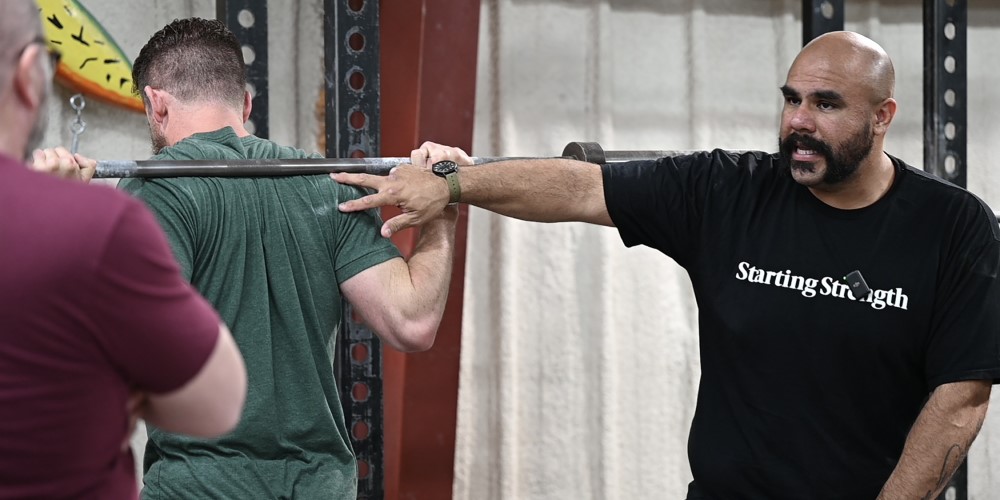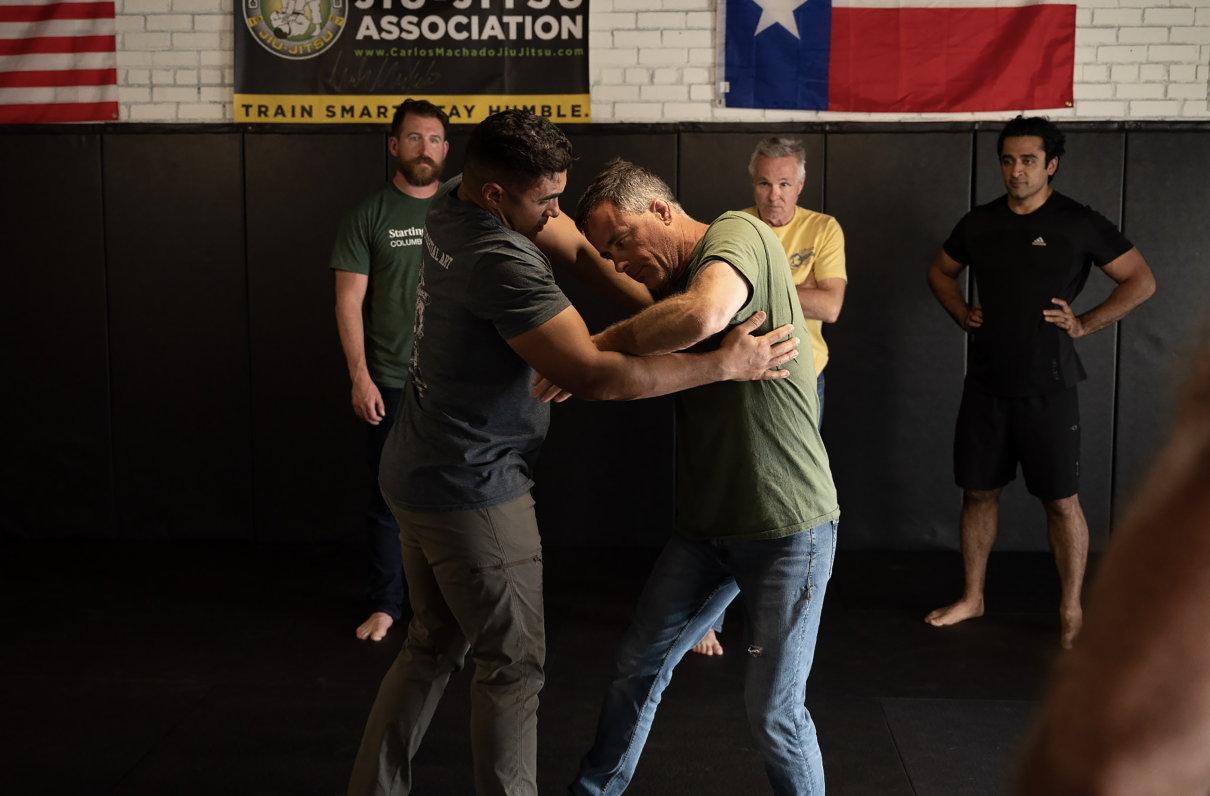(This article by Nick Barringer originally appeared in the January 2023 issue of Military Officer, a magazine available to all MOAA Premium and Life members. Learn more about the magazine here; learn more about joining MOAA here.)
You hit the gym like a beast. You crush mileage goals on your long runs. Heck, even your smartwatch says it’s OK to take a break.
But are you fit enough to defend yourself?
If your years of military training are in the rearview mirror but you still want to build strength and resilience, consider exercising with self-defense in mind. That’s what several coaches believe is critical to ensuring you are physically and mentally prepared to react to everyday situations, whether they are routine or unexpected.
“Being the warrior in the room means that every other person is safer because you are there,” said Sgt. 1st Class Matt Larsen, USA (Ret), director of combatives at the U.S. Military Academy in West Point, N.Y.
Larsen helped build the Modern Army Combatives Program, incorporating martial arts to help soldiers adapt and operate with confidence in combat and other situations.
Veterans and those without a military background can benefit, too. To maximize survivability, a person should be physically strong, competent at employing a firearm, and have basic combatives techniques. Or, in other words, be able to lift, shoot, and fight.
[LEARN MORE: CombativesUniversity.org]
John Valentine, one of Larsen’s students who is also a firearms instructor, and strength coach Nick Delgadillo teach others to do just this, encouraging students to become stronger and more durable. That can be beneficial in terms of injury prevention and recovery and also for self-defense.
Valentine and Delgadillo hold “Lift, Shoot, Fight” training camps — open to all, regardless of background or experience — that cover a mix of basic barbell movements such as the squat, press, deadlift, and bench press, as well as firearms and grappling instruction.

Letting go of your ego is important to maximize the benefits of training, said
strength coach Nick Delgadillo.
They discussed physical strength and combatives with Military Officer:
Q. Why is strength important for self-defense?
John Valentine: I believe strength is essential for self-defense because it will directly translate to our ability and body control. What I mean by that is that we can control our movements and the movement of another resistant human being. There is no hope in being able to control another human being if we cannot start by physically controlling ourselves.
The other reason that strength is essential to self-defense is that most of the top causes of mortality in the United States are health-related. Adherence to a regular strength program will directly benefit physical health.
The last reason I believe that strength is essential to self-defense is the factor of durability. Stronger people experience fewer injuries than weaker or deconditioned people, and stronger people tend to recover faster from injury. Regular training is the only way to become proficient in self-defense; damage is inevitable. Being stronger makes us more durable.
[LEARN MORE: DeedsOfArms.com]
Nick Delgadillo: A stronger person is more resilient, can hold positions better, and can push and pull an opponent either harder or by using less effort. Of all the physical attributes that contribute to athleticism, strength is the most fundamental, and the acquisition of strength improves all other physical attributes relevant to fighting someone else.
If you’re going to spend any time improving your physical capabilities, strength training will provide the most return on investment. In martial arts, fighting, firearms, and self-defense, the athletic attributes you possess and develop are very closely tied to skill development.
Q. What is the best tip you can give someone just starting combatives training?
Delgadillo: Two things: Just like with anything that’s challenging and worth pursuing, consistency is the most important element in producing long-term results. Pick a place to train, and train. Make it part of your work week, and schedule the time to get it done if it’s important to you.
Secondly, be open-minded and be OK with not being good at it when you start. Most people have some experience with lifting weights, some experience with martial arts, and some experience with firearms. A good combatives coach’s specialty is integration, and your notions, ego, and experience will be challenged by the training. There is immense value in letting go of your ego and preconceived notions to maximally benefit from the physical and mental problem solving that combatives training will impart.
[RELATED: 'Lift, Shoot, Fight' Events]
Valentine: Never forget that training is a laboratory and not a Colosseum. Unless you sign up for a competition, the only thing your partners want from you is to be tenacious, consistent, and competent. Your only opponent is you, and to beat that guy or gal is to improve from yesterday.
The other thing to remember is that combatives and martial arts share training methods but have opposing goals. The goal of martial arts is to propagate and expand said martial art. Combatives take a reductive and congruent approach. The “perfect combatives system” removes as many techniques as possible, so there is a linear progression toward the desired outcome.
Q. What is the biggest mistake you see when beginning to train with a firearm?
Valentine: In my opinion, the biggest mistake in firearms training is teaching tactics and skills simultaneously. Without the foundation and subconscious competence with gun handling, simultaneously introducing tactics makes people bad at both. Start with the skills, and present the problems that need solving later.
Delgadillo: The biggest issue I see when people start training with a firearm is the tendency to look for and listen to too many differing opinions. There are only a handful of concepts and techniques to master initially, and those should be learned and practiced with the simplest, most reliable equipment possible.
From the gun store, to the shooting instructor, to the martial arts instructor, and on the internet, new trainees are getting bombarded with conflicting and silly opinions based on someone else’s experience. Learn the fundamentals with simple, safe, reliable gear, then as you gain experience with the firearm, … you will make better decisions about gear and training.
Lt. Col. Nick Barringer, USA, is the program director for the U.S. Military-Baylor University Graduate Program in Nutrition.
Military Officer Magazine
Discover more interesting stories in MOAA's award-winning magazine.
